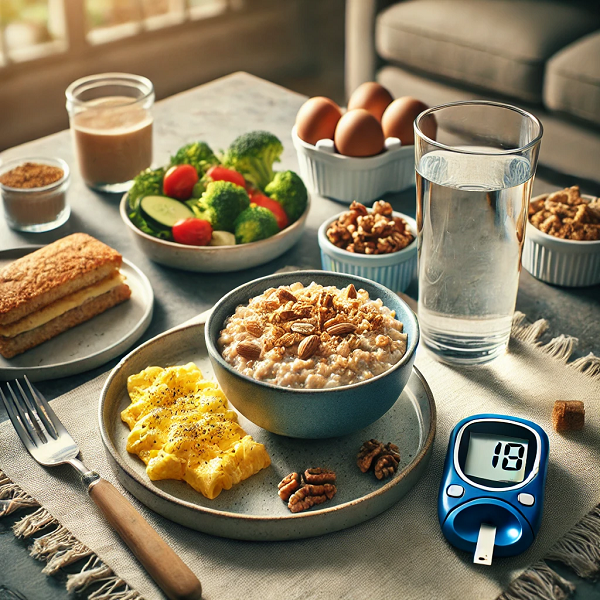Living as a type 2 diabetic can be challenging, but with the right routine, it becomes a manageable part of daily life. Whether you’ve been recently diagnosed or have been living with diabetes for years, understanding what a typical day might look like can help you maintain your health and well-being. Let’s walk through a day in the life of a type 2 diabetic, exploring the key activities, considerations, and tips for thriving.
Morning Routine: Starting the Day Right

For many with type 2 diabetes, the morning starts with a blood sugar check. This simple yet essential task sets the tone for the day, allowing you to make informed decisions about your meals and activity levels. Keeping a log of these readings helps in tracking trends and adjusting your routine as needed.
Breakfast is an important meal, but it doesn’t have to be boring or restrictive. Many people with diabetes enjoy a variety of foods, from oatmeal with a sprinkle of nuts to a veggie-packed omelet. The key is to focus on balanced meals that provide steady energy without spiking blood sugar levels.
After breakfast, some people might take medication or insulin if prescribed. It’s also a good time to plan out the day, ensuring that meals, snacks, and exercise are spaced out to keep blood sugar levels stable.
Mid-Morning: Staying Active and Energized
Staying active is a crucial part of managing type 2 diabetes. A brisk walk, light stretching, or even some household chores can help regulate blood sugar levels. It’s not about intense workouts; consistency and enjoyment are what matter most.
Mid-morning is also a good time for a healthy snack, especially if you’re feeling peckish. A handful of almonds, a piece of fruit, or some yogurt can keep hunger at bay and prevent blood sugar dips.
Lunchtime: Balancing Flavor and Nutrition
Lunchtime offers another opportunity to enjoy a healthy, satisfying meal. Whether you’re at home or work, planning makes it easier to avoid unhealthy temptations. Salads with lean proteins, whole-grain sandwiches, or a hearty soup can be great options. The goal is to create a meal that’s rich in nutrients, fiber, and healthy fats.

After lunch, a short walk or some light activity can aid digestion and keep blood sugar levels in check. Staying hydrated by drinking water throughout the day is also important, as it helps your body manage glucose more effectively.
Afternoon: Managing Energy Levels
The afternoon can be a tricky time for energy levels, especially if you experience a post-lunch dip. If you feel sluggish, a small snack might be needed to keep your blood sugar stable. Something as simple as carrot sticks, a piece of cheese, or a small handful of berries can do the trick.
This is also a good time to check your blood sugar again, especially if you’re planning on doing any physical activity later in the day. Keeping an eye on your levels allows you to make adjustments to your snacks or meals as needed.
Evening: Winding Down with Care
Dinner is often the largest meal of the day, but it’s still important to keep portions in check and focus on balanced nutrition. Grilled chicken or fish, roasted vegetables, and a small portion of whole grains like quinoa or brown rice can make a delicious and diabetes-friendly dinner.
After dinner, some people might need to take their medication or insulin again. This is also a good time to reflect on the day’s blood sugar readings and note any patterns or areas that might need adjusting.
Engaging in a relaxing activity like reading, watching a show, or spending time with family can help you unwind. Some light stretching or a gentle walk can also promote relaxation and support digestion.
Nighttime: Preparing for Tomorrow
Before bed, a final blood sugar check is a good idea. This reading helps you understand how your body is responding to the day’s activities and meals. If your levels are on the lower side, a small bedtime snack might be necessary to prevent overnight lows.
Creating a consistent bedtime routine can support better sleep, which is crucial for overall health and blood sugar management. Aiming for 7-8 hours of sleep can help you wake up refreshed and ready to take on a new day.
Living Well with Type 2 Diabetes
Managing type 2 diabetes is about finding a routine that works for you and sticking to it. While it might seem overwhelming at first, many people with diabetes lead full, active, and happy lives. By focusing on balanced meals, regular activity, and mindful monitoring, you can thrive and enjoy each day to the fullest.
Remember, everyone’s experience with type 2 diabetes is different. It’s important to work closely with your healthcare team to create a personalized plan that fits your lifestyle and health needs.
References:
- American Diabetes Association – Living with Type 2 Diabetes
- Mayo Clinic – Type 2 Diabetes: How Lifestyle Changes Can Help
- National Institute of Diabetes and Digestive and Kidney Diseases – Type 2 Diabetes Overview
- WebMD – Type 2 Diabetes: A Day in the Life
- Centers for Disease Control and Prevention – Managing Type 2 Diabetes
type2diabetes #diabetesmanagement #healthyliving #diabetestips #bloodsugarcontrol #diabeticlife #diabetesawareness #healthyroutine #diabetessupport #livingwithdiabetes







